
5 minute read
An interconnected future
The concept of a smart city ecosystem – and how workplace and facilities managers can help in developing and sustaining one – was the subject of a round table event held recently at Microsoft’s offices in Paddington, London.
Entitled ‘The Smart Places Ecosystem – Unlocking the full potential of SMART assets/ buildings/cities/portfolios’, the discussion was the first part of a project being undertaken by the IWFM in partnership with Microsoft to produce further guidance on the topic.
The smart city ecosystem notion is rooted in the idea of previously independent local buildings becoming increasingly linked by technology, enabling interconnected efficiencies across a variety of perspectives from security, productivity and, perhaps most topically, energy management. Except, that’s just the most immediate description from an FM point of view. More broadly, a ‘smart city’ comprises processes and policies as well as enabling technologies, all collaborating towards a wider range of required outcomes across this interlinked ‘estate’.
The question, tackled by an audience representing FM service providers, technology providers, researchers and clients, was the extent to which FM is, or can be, a key factor in both the developing and sustaining of such ecosystems. After all, IT ecosystems operate pretty much everywhere – it’s just the extent to which they are connected that’s questionable.
A critical starting point is to realise that even in published literature the term ‘smart places ecosystem’ is a relatively recent one, with most definitions to date
SMART CITIES
Smart building ecosystems – an interconnected future
By Martin Read
claiming that such a system ‘can be defined as’ rather than ‘is defined as’ what is then described. That’s important – these are early days.
The discussion touched on moving on from the workplace and facilities management sector’s often fragmented approach to these critical issues of developnent, instead seizing the initiative and playing its part as an integral part in the many complex discussions ahead. Here are the key takeaways:
PHOTOGRAPHY: ISTOCK
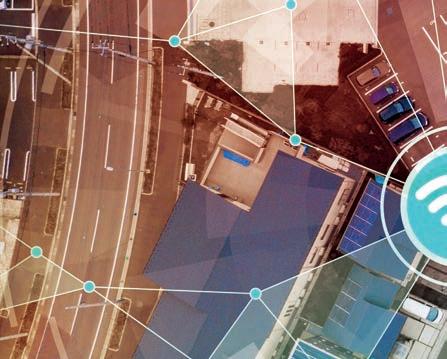

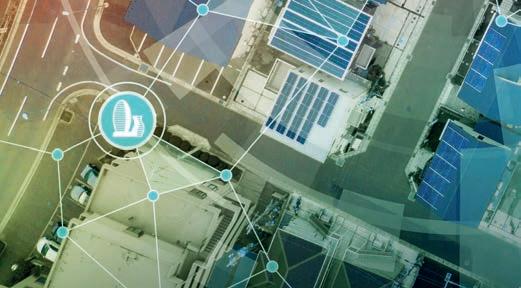
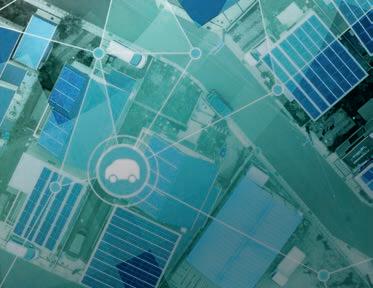
1From a business perspective, we’re in the very early stages of these kinds of ecosystems and the technology that supports them. Many large client organisations have yet to start on this journey, although they are most certainly interested in the potential benefits.
2There is a tension between the need for a smart city ecosystem to prescriptively set out what is possible through a standardised framework, yet simultaneously allow for new technologies to supplant existing ones. How far back in the development of the ‘open system’ approach to software development do you go? Which leads on to point 3…
3The question of who owns or oversees a smart city ecosystem is not settled. If the ecosystem itself needs to articulate what it is possible for organisations to achieve within it, as suggested during the discussion, who should particularly when with FM it has historically all been about squeezing the margins. A ‘leap of faith’ would be required. But could it be that an interdependent smart city ecosystem breaks this cycle, making visible both internally and externally the benefits of FM’s hands-on approach?
9The FM sector should not be afraid to work together to come up with common initial approaches that could then be built on by individual service firms. Similarly, suppliers working down the chain will gain from all this interconnectedness and will put on their own pressure.
10The need to retrofit systems to improve building performance will put pressure on asset owners and on their FM teams to step up. But there are internal obstacles to overcome to change the culture of some firms. No more information silos can be allowed to exist.
11The UK, from the perspective of the maturity of its FM sector and the availability of technology, is in a ‘Goldilocks sweet spot’ and could become worldleading in the development of smart city ecosystems.
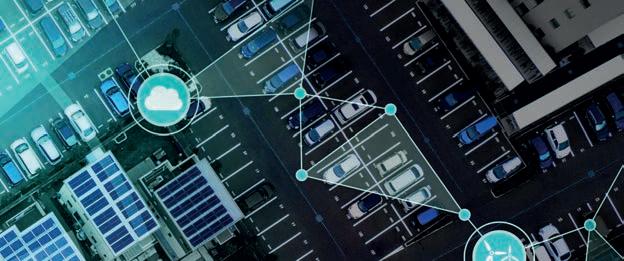

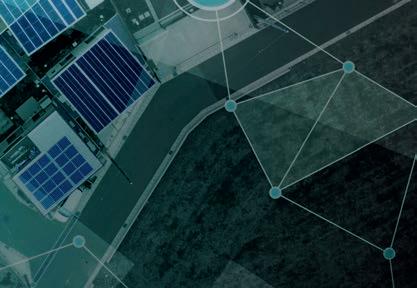
be responsible for this? The intriguing scenario is one in which no single organisation or standard dominates or dictates how different systems should interoperate, instead, a looser approach is taken. But can this work if, as suggested “‘a true ecosystem needs to ensure all parties gain from it”?
4Good news for FM: the sector’s notoriously wide-angled view of an organisation’s buildings puts it in pole position to unify such a system. Yes, there is building information model data and the use of digital twins, but what facilities management can bring is accurate and realtime operational data for more immediate decision-making.
5Bad news for FM: There is a huge amount of education required among existing FMs if they’re to take such a lead role, and there may be too few digitally native FMs coming through to seize the initiative. Signs are that the generational shift to more digitally native FMs will help, but will enough of them come through in time?
6Workplace and facilities management as a sector needs to improve its evidence gathering if it is to have a deciding role in what data it needs and how it can be used – otherwise large multinational software players are likely to come in and do it their way.
7Many other ‘value creators’ are likely to influence a smart city ecosystem, ranging from national and local government to residents and other local firms.
8Unsurprisingly, concern was raised about the business case necessary to start a project in this area, Next Steps
The next stage of this project is a ‘Living Labs’ process in which issues raised are evaluated point by point.
IWFM and Microsoft previously collaborated on a report, Bridging FM’s Digital Divide, to help the profession overcome the tech barrier and realise its potential to impact workplace performance.
FURTHER READING Bridging FM’s Digital Divide tinyurl.com/Fac0506-SCE










